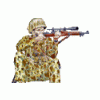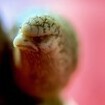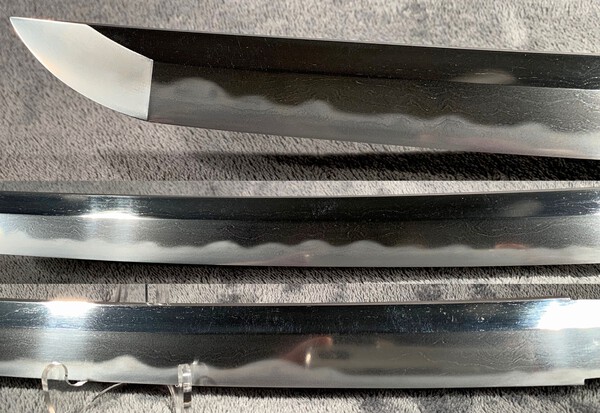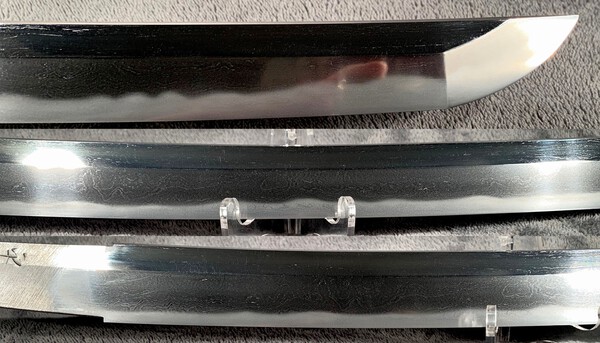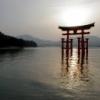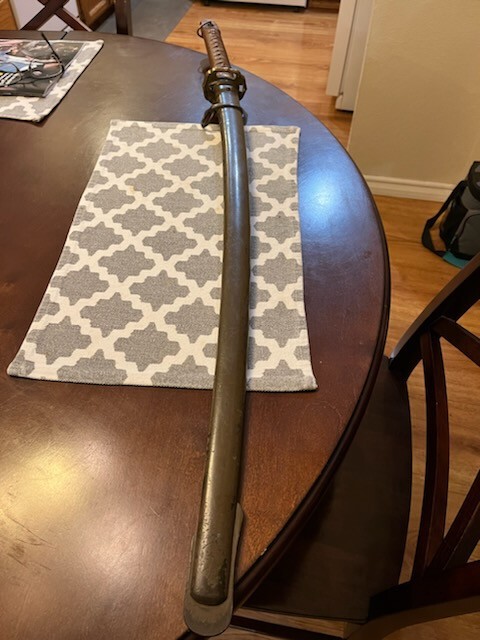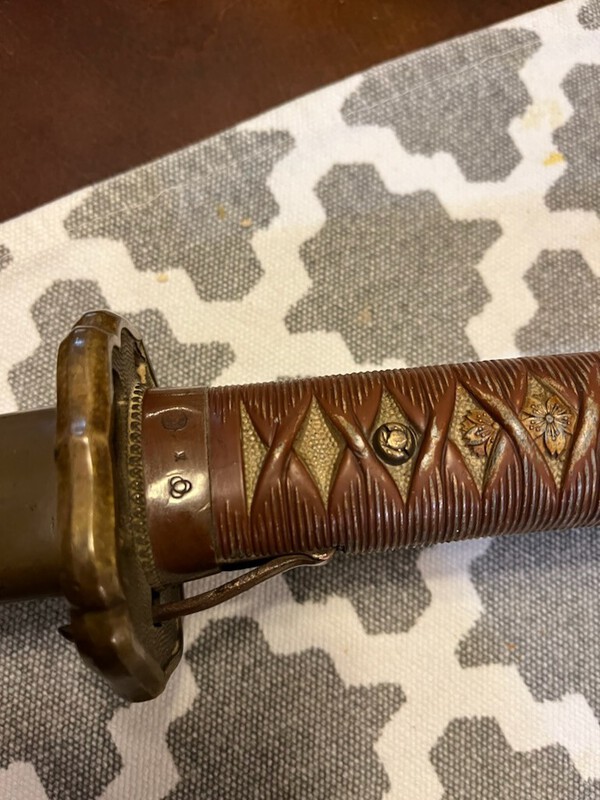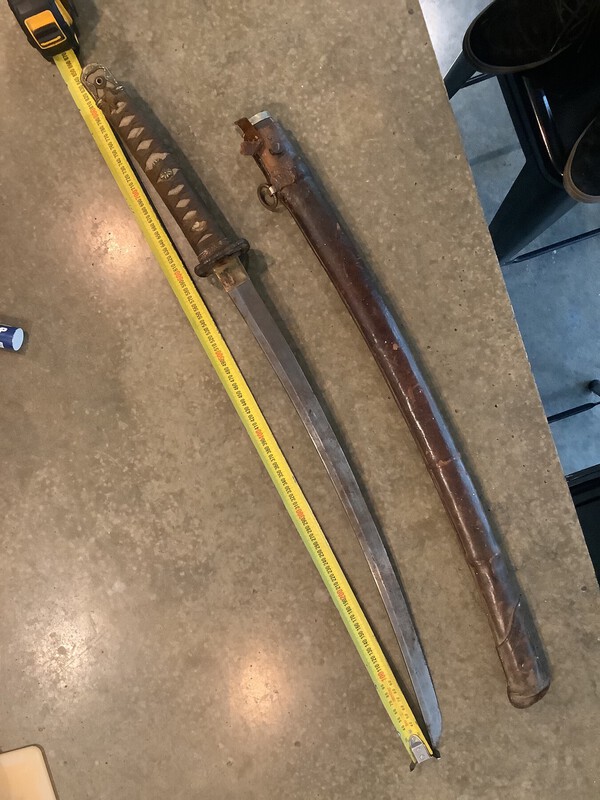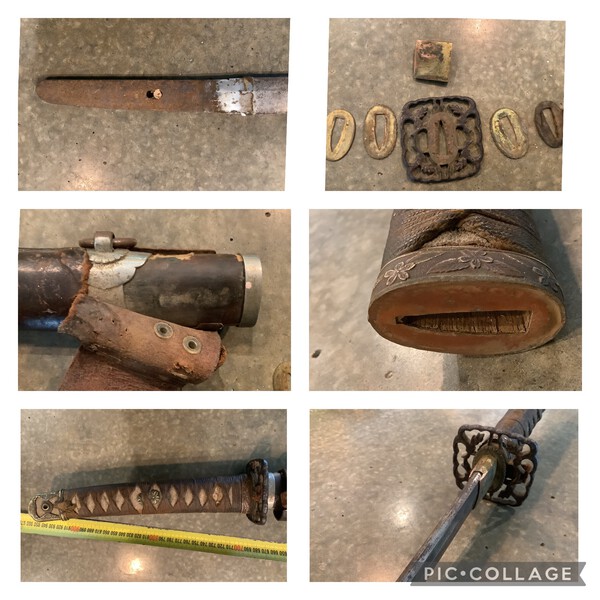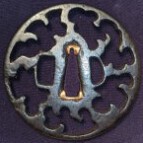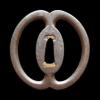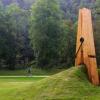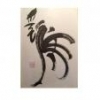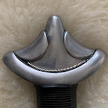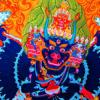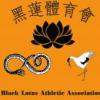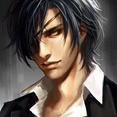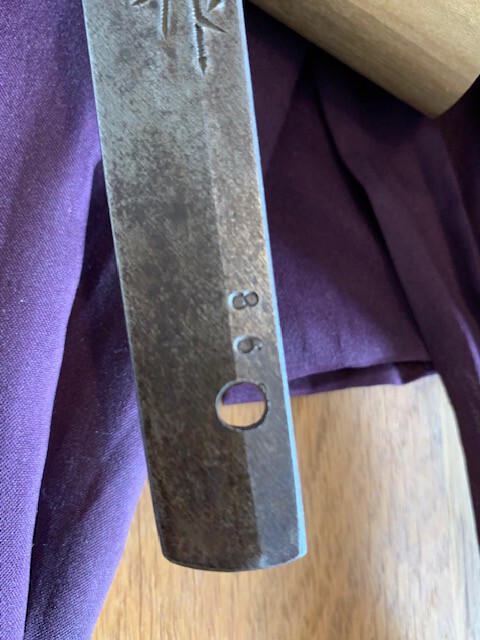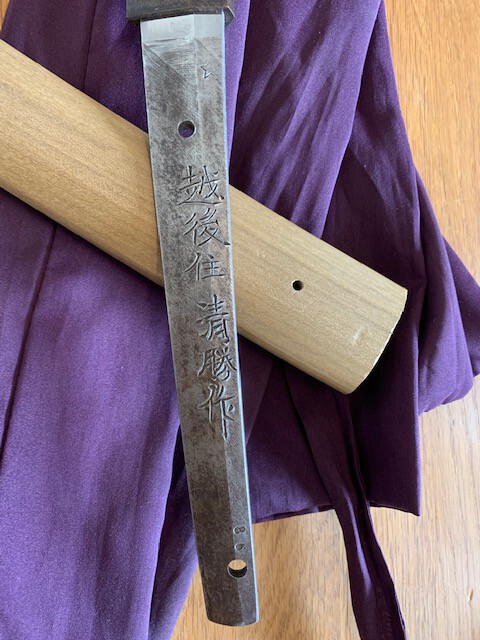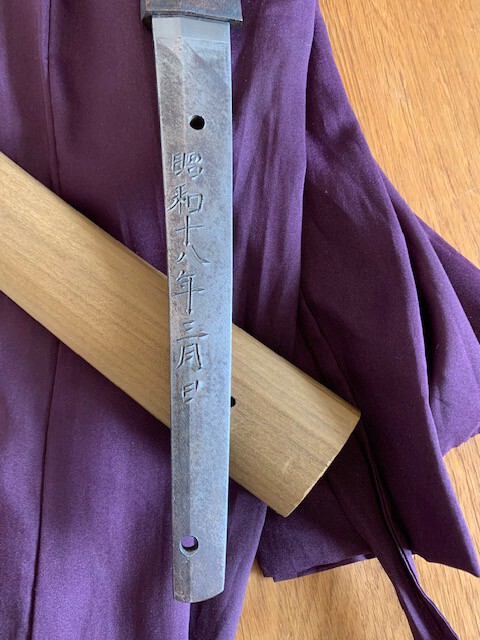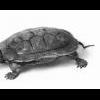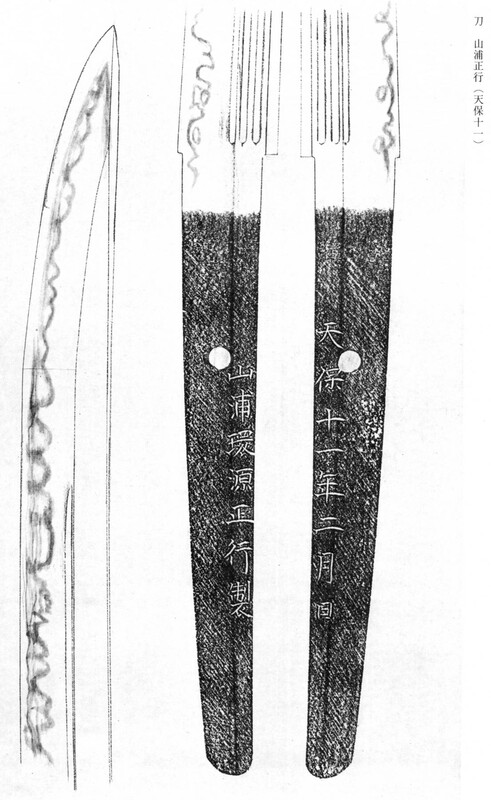Leaderboard
Popular Content
Showing content with the highest reputation on 11/17/2022 in all areas
-
This week I was happy to receive news that my mumei Yamato Taima daito attributed to Cho Aritoshi made Juyo. It will be awhile before I see the sword again, a good time to find more info on Cho Aritoshi. I've found the basic linage on data on him, but I hope to find out what pointed to him specifically. Mr. Tanobe wrote an extensive (covering entire shirasaya) prior to shinsa. This will eventually be translated to reveal this info (hopefully). Also the Juyo description will hold answer but that comes in the future. meanwhile, I wonder 1) how many Juyo Token have been attributed to Cho Aritoshi; 2) available, what was said about him on the Zufo description; 3) one past topic was from a member who had a TokuHo with sayagaki to Cho Aritoshi. Has that been translated? This is the fun part, to learn as much as possible about this wonderful sword. Thanks in advance. Ron STL9 points
-
Dear Matthew. Welcome to NMB. Chris has given you a very condensed answer so let me unpack it a bit for you. Most swords carried during WWII are known as Shingunto, type 98 refers to a specific variant of these mounts. They are not mass produced in the conventional sense but they are all made to a specification. However it is often the case that older blades were remounted to carry to war, it used to be assumed that these were family blades given to the son to carry, in fact many of them were used to save on manufacturing and resources. Much less romantic and of course, impossible to say which applies to your sword. It is impossible to give you much information about the blade from photograps but if I had to guess I would suggest that it might be a Koto blade, which means from before 1600 Yours also has an older tsuba, the guard. A decent shot of this posted in the Tosogu section might attract some information. (Tosogu means fittings and a lot of collectors specialise in this.) Another intteresting feature is the hanger on the scabbard which is somewhat unusual and may suggest that the original scabbard was used under the leather combat cover. Any cleaning that you do should only ammount to wiping the blade with a light oil and perhaps some leather cream on the combat cover, anything else will harm the sword. If you do decide to do a full restoration then brace yourself, it's an expensive process. You may wish to preserve as is. It's an important link to your Grandfather and what he did. For a lot more information you might like to have a look here, http://ohmura-study.net/900.html Grab a coffee, there's a lot to go through! Feel free to ask further questions. All the best.8 points
-
I'll not resubmit my sword. It is just a certificate, and does a Masayuki/Kiyomaro blade absolutely need Juyo papers? Even if it would influence its potential value it wouldn't matter to me since I'll be keeping it anyway. Plus, to be honest, after more than three years of it out of hands I am really highly looking forward to see it again .5 points
-
Congratulations 1) So far I believe there have been 39 swords by Aritoshi smiths or attributed as, in the 67 sessions. There are 4 signed tachi that have been awarded Jūyō status, and the one signed 長有俊 has been elevated to Tokubetsu Jūyō. I have found 2 other signed tachi by Aritoshi and one is dated to 1298, making the total of 6 signed tachi that I have been able to find so far. There is also gakumei katana signed 長有俊 that has made Jūyō. I cannot really say which is 1st gen and which is 2nd gen (Chō Aritoshi) but I took a look on the mumei attributions at Jūyō and I noticed I had made errors in falsely combining these 2 smiths under one category in my index and I just sorted it out. It seems that following are for towards Chō Aritoshi. 1 signed tachi, 1 gakumei katana, 13 mumei swords with Chō Aritoshi attribution and 7 swords with den Chō Aritoshi attribution. So I believe in total there would be 22 Jūyo swords that are towards Chō Aritoshi and 17 that are attributed towards the 1st gen. Of course this is only by looking at the one line attribution and not digging into what is said about these particular swords in the text portion.5 points
-
Hi Ron, congratulations! I have a juyo (den) Cho Aritoshi that I really enjoy. See attached. My assumption also based on the settsu-mei has been that there were two generations Aritoshi with Cho Aritoshi being the second generarion. I have not finalized the translation in full but most of it is attached with help of a Japanese friend who is not a nihonto student so I need to edit some terminology still. Description It is said that Aritoshi was a swordmaker belonged to Yamato taima (or taema) school and he has two names: one is Aritoshi (有俊) consisting of two Chinese characters and another is Cho Aritoshi (長有俊) consisting of three Chinese characters. The former one can be seen produced in Einin 6 (1298). It is a common theory that mei of Cho Aritoshi (three Chinese characters) shows the second Aritoshi, the era is approx. Kenmu, shortened name of Chobei (no) jo Aritoshi. This sword is that jigane is koitame with slightly nagare masa, thick jinie sticked to pieces, hamon is suguha, kochoji, kogunome, kui chigai ba & niju ba & yubashiri on habuchi, thick nie is brightly saeru, etc, significantly see Cho Ariyoshi’s feature on jiba (jihada and hamon) and kiwameno syuko sareru (it is proved as the past authentication.). As Cho Ariyoshi’s feature, habuchi is a highlight of niju ba. This sword has strong hanie with Cho Aritoshi’s kiwame, niju ba with thick and condensed nie can be frequently seen on habuchi, hamon is clearly skillful. It is an excellent piece of work the sayagaki of Tanobe san does not mention it specifically: Sayagaki Tanobe Sensei 62th juyo token The Wasyu Cho Aritoshi. This sword is Osuriage Mumei. This sword smith was Taima school’s student, he was a sword smith in the Kenmu era. Hamon is Suguha and chogunome with deep and thick Nie. Also, Hamon has many Niju- ba and Yubashiri. This sword has a lot of characteristics of Aritoshi and is excellent. Nagasa 2 shaku 2 sun 2 bu Year of the Rooster 2017 enjoy your new acquisition! best regards John 62th Juyo Token.docx4 points
-
Unfortunately I don't yet have the book that Ian mentioned in above post but I will get it eventually, as it will be very interesting book. If you count all of the blades that I have found so far that are attributed towards Masamune (be it by den attribution, kinzōgan etc. that are authenticated by Government bodies, NBTHK or Museums, Shrines etc.), the number so far is 103 (there are 5 Jūyō blades that I do not yet have the books for). So it would be at least 108. Out of those at least 43 would be named swords (+1 Jūyō that I am missing). Even more of them could be named but I have not yet encountered their names in any references.4 points
-
That is an interesting question John . In 1719 the Shogun had the Honami family prepare a catalogue of famous swords . This is the Kyoho Meibutsu Cho . The book Zusetsu Token Meibutsu Cho ( Tsujimoto 1970 ) is an illustrated version of this . The Kyoho Meibutsu Cho lists about 38 swords that are by Masamune ( including three long blades ) together with a further eighteen blades ( two of which are long blades ) that have been through fires . None of these five long swords are signed . The leading sword scholar Albert Yamanaka wrote that " there are no long swords known to exist today that are signed " . Yamanaka wrote that only three of the short swords had signatures that were considered " to be the true inscription of this smith " . Niel probably wonders why people piled onto his sword . This is the main reason , there are NO known long swords signed by Masamune that are genuine, nor were there any in 1719 so far as the Honami were concerned !! Not all Masamune swords are however listed in the Meibutsu Cho. If you wanted an accurate answer to your question you would need to go through the lists of National Treasure, Juyo Bunkazai and Juyo Bijutsuhin swords and extract all of the Masamune listed there . Jussi Ekholm has published these listings in the articles section . You would also need to extract all of the Masamune that are either Tokubetsu Juyo or Juyo rated . Again Jussi has provided an index to all of the Juyo volumes . I am not aware of an index to the Tokubetsu Juyo swords . Once you did all of this the problem would arise that the National treasure , Juyo Bunkazai and Juyo Bijutsuhin classifications are Government rankings wheras the Juyo and Tokubetsu Juyo classifications are NBTHK rankings . Some swords will double up and be say both Juyo Bijutsuhin and Tokubetsu Juyo at the same time . You will also have a further complication where the sword is Den Masamune ( see Darcy's article on this problem ) . It would be a big task. So far as I am aware the only missing Masamune, other than some of those that went through fires , is the Honjo Masamune .This sword was a pre war National treasure and is now Juyo Bunkazai . Ian Brooks4 points
-
Offer for sale Miyairi school Wakizashi in Shirasaya Mei : Fujiyasu Masahira Era: Gendai Habaki: Double cooper Habaki with gold color Nagasa: 52,2 cm Sori: 0,9 cm Motohaba: 3.2 cm Sakihaba: 2.6 cm Kasane:. 0.7 cm Shirasaya with Sayagaki Masahira is a very important smith. He was one of the top students of Miyairi Akihira/Yukihira - a national living treasure route. Upon Miyairi Sensei unexpected passing, he took on training his son, Miyairi Kei (Nidai Yukihira). Miyairi Kei would go on to a spectacular career and achieved Mukansa in 2000. Although, Fujiyasu Masahira gave up on contest and competitions and therefore will never be Mukansa or higher, he was very successful when he did participate. There is a very interesting write up on him in "The New Generation of Japanese Swordsmiths", that describes his passion for finding his own unique way to forge swords and his reluctance to attempt to simply recreate old blades, which is what he seemed to perceive was the only way to win. Just a really interesting guy and talented smith. An interesting article about the work Fujiyasu Masahira you can be found eg. here https://nihontou.jp/choice03/toukenkobugu/masahira/01-e.html The blade is done in excellent Soshu Den, which the Miyairi group is well known for. As you can see in the Sayagaki, "Fujiyasu Masahira made this sword for Mr. Clinton in 1991". Asked price for this excellent modern Wakizashi is SOLD Price includes transport costs within Europe No customs duties within EU3 points
-
It's amazing how the rude and obnoxious members are almost like clones of each other. There is only a handful of them over the years, but they are exactly the same with the same distasteful air about them. Mind you, most of us are quite able to ignore them, but I bet it does their reputation a nice big knock. Buyers, know your seller.3 points
-
this thread is strange. I have known Gary for 30 years, he is knowledgeable and a collector, he is not trying to talk up what he posts to sell it. He has a number of great items and it is kind of him to share. I think we do the NMB a disservice if we stifle peoples willingness to share, we should encourage it. You don't have to make positive comments if you don't like something but it would be nice to be respectful and limit negative replies unless opinions are solicited. Just my opinion, and --- caveat: Gary is a friend so i am biased.3 points
-
We are speaking about different things though. You are talking about cast copies of known designs. I'm talking about 1700's books published by schools, where they would have had their designs and techniques published. And if casting was "new technology" they would likely have mentioned it there, or even had schools of casting producers. Think of Natsuo's books, or the Akasaka design books. Where are these schools of cast tsuba makers? Where are the cast decorations made in iron for armour or cast yajiri and yari? Much easier to cast cheap arrowheads and they don't have to be tempered or hardened all the time. Surely the bottom fittings (ishizuke?) on the bottom of yari would have been cast? Have they been analyzed yet?3 points
-
Hi Kay, The sword appears to be genuine, and from the photo's i believe it could be matching numbers. It was made by Iijima under the Kokura Administration. They were one of the subcontractors supplying the Tokyo Arsenal. The handle is Painted Aluminium in this case and it is quite clear in the photo's provided. Overall it appears to be in clean condition, that is not very well worn/abused. The serial number range is correct for this manufacturer. These are generally going from $700 to $1200 at auction depending on condition, so this would be at the higher end. You will find some dealers asking hugely inflated prices, even double the high end i mentioned, but their listings are around for a long time and are very slow sellers.( on occasion, they may be rare and will command higher prices anyway - this particular one if fairly common to find) Here's a good overview primer for you to read if you haven't got any reference books https://www.warrelics.eu/forum/Japanese-militaria/ija-type-95-nco-sword-info-228172/ if you want to know more indepth there's this one: https://www.warrelics.eu/forum/Japanese-militaria/short-development-history-type-95-gunto-676112/ Also if you do a search on this site you will find many threads about this particular model. I hope this helps you some. Good luck, and if you do get it, please post some better pics here, as there are a lot of people here who love looking at these!3 points
-
Well I have to agree with some of Fords statements - too much of what we accept is unsupported dogma. Such as the made up stories of pounding Iron tsuba in a pestle to see if they are strong enough to survive use, bullshit no matter where the source came from, Shingen were also meant to be lighter in weight - bullshit. But please don't fall in the trap of believing that 19th century museums could not keep proper notes of their acquisitions. I would love anyone to tell the Metropolitan mueum that their donations were accepted on the wrong date. Or that Bashford Dean did not talk to living Samurai experts. [even if he did have a predilection for Kaneie copies] If we could thin out and leave only the facts from most books - Japanese as well as western, we would have considerably less reading to do than now. It is a little like taking out all the dross and falsehoods in the bible - we would be left with a slim pamphlet. [But who would dare tamper with dogma!]3 points
-
Hello all! I discovered this forum in the course of trying to bring myself up to speed on shin gunto NCO swords as thats become a recent topic of interest for me. I'm mainly a firearms collector but have been thinking about branching out into the world of edged weapons and, having some Japanese heritage I thought this might be the right path for me. By coincidence, a collector I've had dealings with in the past offered me a Type 95 (I believe?) that he indicated has been in his family for decades as part of his late father's collection. This would be part of a package deal with another piece and, since I'm such a neophyte in this area, I thought it prudent to reach out to the experts to determine if there were any issues with this potential purchase. Unfortunately the images I've been sent are quite small and a few of the markings are out of focus - from reading the very helpful fake Type 95 thread the fonts and font placement of the serials looks about right to me? The tsuka looks to be fairly detailed and not poorly cast as in some reproductions, the fuller looks about the right length on the blade, the wear looks fairly consistent with the age. The things that give me pause are the blades overall very even appearance and the fact that the tsuba looks brass colored - I think it's actually aluminum and the lighting is making it look like brass but I'd have to see it in person to know. Would anyone care to chime in regarding this swords authenticity? Any replies are welcome! I've tried to do a bit of research on my own but things like serial number ranges and proper arsenal stamps still elude me.2 points
-
I was wondering if anyone could give me some info on this sword. What I know is it came home from New Guinea with my grandfather after he was wounded in battle at Gona around end of 1942 - start of 1943. Not sure if he got it from the battle field or later after recovering in Port Moresby. The force they encountered were IJA 55th Division & IJA 17th Army,South Seas Force. It sat on top his wardrobe until it was passed onto me 20 years ago. The handle appears to have been replaced at some point as hole in tang has been redrilled. No defining markings under the handle.2 points
-
Nice sword and ditto what Stegel and Rob said above. As you are in the States, start with Dawson's book first. A beginner only needs 1 or 2 books to get started with military swords, either F&G and/or Dawson's. Dawson, Jim. Swords of Imperial Japan, 1868–1945. Cyclopedia ed. Newnan, Ga.: Stenger-Scott Publishing, 2007. ISBN 978-0-9719127-2-4.2 points
-
Thanks so much everyone for your nuanced and detailed replies! Extremely gratifying to find a forum with such quick and easy expertise - definitely better than some of the experiences I've had in the gun world haha - I have made plans to pick this sword up and will definitely be posting additional photos of it once I have it in my possession. Thanks also for the note about leaving the tsuka intact, I've seen a lot of pics with the blade removed but I'd also noted that these machine made mass production ones may not have much useful info under there, good to have it confirmed. I don't currently have any books on the topic but I have pre-ordered Plimpton's new work from Headstamp Publishing - lets just hope I can keep this hobby to a reasonable limit of one or maybe two items haha2 points
-
Condition is very poor. But it's real, old and entirely plausible to be 400 years old. Looks to be an old mumei(unsigned) wakizashi. Get some oil on it, and wipe gently. Repeat until all the rust is stabilized and black. Don't use anything abrasive and don't try to polish or work on it.2 points
-
I don't think the casting of tsuba more than 200 years ago would have been done for deceit. I wouldn't imagine it would have been done to save time or money. Just a different way to manufacture. So no reason to hide them back then.2 points
-
Glen, Not having much knowledge of how and what Ford is studied, I would be cautious about disregarding his opinion. Not sure how much you know about Ford. But his work involves not only studying these items, but actually MAKING them, reproducing the metal, trying out all the techniques and getting hands on with all the various metals and styles. Having been at his house, and seeing his library of studies and ancient scripts etc, I am the last person to disregard his theories. I don't think it would be incorrect to regard him as one of (if not THE) world's most knowledgeable person in the material/crafting of Japanese metals. We have guys who have been here for 15+ years who battle to tell what is cast and what isn't. Myself included. So saying that some of these early pioneers weren't experts is not out of line. Did they have fancy laboratory equipment to examine metals? We have writings going back hundreds of years from tsuba schools talking about how they were making tsuba. Goto, Akasaka, Mito etc etc etc. Where are these writings about the schools who were casting tsuba and where are their pattern books? I'm not saying I have made up my mind confidently either way, but I also haven't seen any real proof of mass scale cast production of tsuba. The above is said very respectfully. Through questioning we are learning all the time, and I don't have anything against your opinions or statements above. So just giving mine, and am glad to hear more of your views, as well as Ford's.2 points
-
I have noticed a disturbing trend where quite a number of posts show deliberate attempts to diminish a person's status by belittling them or outright mocking them or their ideas... primarily directed towards "beginners" and the two dead guys: Lissenden and Joly. Selectively targeting a misstep does not nullify every idea or concept associated with the person who made the claim. For example, to be "amused" at the mere mention of Joly, just because he is known to have made some errors in his writings about tosogu (which were based on the information he had available to him at the time), is quite shocking and ignorant from a historical perspective. From a scientific perspective, it would be equivalent to laughing at an earlier scientist simply because they didn't know what we know now. But if anyone feels that is justifiable, at least they can rest assured that the same will happen to them one day... The fact that Joly never went to Japan or studied under a Japanese craftsman, by no means prevents him from discerning a cast-iron tsuba from a forged iron tsuba that he was holding in his hands. Someone with that much experience and who had handled so many tsuba prior to that moment, has to be given a little more credit than a dismissive wave of the hand. That dismissive statement comes across as a blatant attempt to cast doubt on the validity of what that experienced person witnessed and reported, simply because their findings contradict someone's beliefs. It's also interesting to note that neither Haynes' nor Sesko's researched statements have even been addressed, let alone countered... Both of these gentlemen are still alive and their research on the subject far outranks anyone on this message board. Why no ridicule for them I wonder...2 points
-
Wonderful info by Jussi as always. Need to find a way to officially designate you as forum researcher Jussi2 points
-
Hi Kay welcome, I'm with Stegel in that it looks authentic and a fine example. I would be very happy to own it. These Type 95 were issued to NCO's in the IJA (Non Commissioned Officers in the Imperial Japanese Army) "the blades overall very even appearance and the fact that the tsuba looks brass colored - I think it's actually aluminum and the lighting is making it look like brass but I'd have to see it in person to know. " Many blades on 95's are very clean either because they have been looked after or they have been cleaned up. But either way, as they are not 'traditionally made' there is nothing to worry about there...looks good. The tsuba should in fact should be made of brass (not aluminum) and from the pictures it looks fine. Nice to see you did some relevant research before posting here....it's not necessary of course, but it is very refreshing Rob PS When you get it don't be tempted to pull it apart (remove tsuka etc) as there is nothing to see on the tang/nakago, and there is a possibility it might not go back together as tightly as it is now. Type 94, 97 & 98 officers swords are a different proposition and they are made to come apart easily.2 points
-
Ed, as Jan noted he is Fukuda Kanetake. He was an early wartime smith and is in the Gifu list of 1937. Not much available on him, and seems limited production. in this report: It does appear it is not Kanetake, but Fukuda Kanetsugu 関住福田兼次作 . He is very early war as Sho stamp....but it is of interest that he is not in the 1937 Gifu list.2 points
-
I'm so impressed by Jussi's tally of inforation, quite and undertaking it would seem. It puzzles me somewhat if there was one Cho Aritoshi or and Aritoshi followed by Cho. This sword was the late Arnold Frenels 8th sword he ever owned. I acquired it in trade for a wonderful Naginata by Horikawa Kunimichi naginata. Arnold had faith in this sword so Juyo status confirms his optimism. I enjoy keeping the "history" of recent background of swords like this and how they are recognized and given their proper recognition. Again, I hope perhaps there is a Zufu translation available or Tanobe sayagaki translated. We shall see... I have the NBThK listing (now outdated) of Juyo swords. Would this be listed under Yamato Taima swords? I may have some of these Zufu here that include Cho Aritoshi Juyo blade. Wish I could be fluent in Japanese...don't we all. Ron STL2 points
-
2 points
-
Found you another one to compare to. ☆ 濃州兼久作 = ☆ Nōshū Kanehisa saku. 昭和十八年四月 = April 1943. Type 3 1944 Pattern Shin Gunto Sword Pictorial: Show us your Type 3, Post #492 points
-
2 points
-
Howdy Nihontophiles, I've not been hunting blades the last 4 years or so unless they fell into my lap. Recently I have followed a few online auctions (not ebay) for pretty common gunto and gendaito military blades amongst others and the prices seem to have increased maybe 30% or so the last 4 years. So, what is the state of the market these days for Nihonto?1 point
-
The blades were inspected at the swordsmith's forge and then sent to Tōkyō 1st Arsenal. Upon arrival, I believe they were then serialized without regard to the production date. For this reason, the dates can and will be out of sequence to the serial numbers. Some swordsmiths worked a great distance away from the arsenal and thus the inspector would arrive at a much later date than say a swordsmith who worked closer to the arsenal. Bottom line, go by the serial number first and then make sure the date is reasonably close to the other surrounding RJT blades.1 point
-
Trystan, it is an English language thing. The problem is how can a "Japanese sword" be made in China and still be called a Japanese sword. The English language can be a bugbear at times as I imagine you are well aware of by now!1 point
-
Hello Bob…from the somewhat gloomy UK Just my opinion…..but I think it’s a buyers market right now and likely to become moreso. With all the “issues” going on in the world I think most people will become more cautious with their cash. This has been reflected in some recent high profile auctions where a lot of “over-estimated” stuff failed to sell. On the “for sale” section of this forum we often see nice items that go through several price reductions before they sell….or maybe they don’t even sell. That’s not a criticism of the sellers, but it is an indication of current demand vs supply dynamics. There will be exceptions though……anything “sleepy” in an auction will get chased by everyone hoping for a bargain and thus end up expensive especially with the damned auctioneers commission added on. Another exception is when something seriously good comes along at a sensible price(whatever that is). The very best things usually sell well and hold their value better than “ordinary” items. There will always be some seriously wealthy buyers for top quality. ”Run of the mill” is likely to face price/value reduction maybe for a few years. But we don’t buy these wonderful things for investment do we?…unless we are crazy! Be really interested to see what others say, especially any dealers opinions. All the best Colin1 point
-
The inherent problem there is that you are talking about samurai again, not the target market for cast fittings... refocus your attention on the general populous who would have had a far more varied buying potential. It is well documented that during the peaceful Edo period, some merchants had exceeded the wealth of many samurai, while the masses were still much less affluent. Yet the samurai were still the "cultural elite", and the general masses were not as "cultivated" or as educated as the samurai themselves. So, it doesn't take much of a leap to envision the general populous admiring the cast tsuba copies that have a lot more "obvious" designs with 3D depth to them, like "the frog" and "the rat", or any of the heavily carved "Choshu and Bushu" tsuba, as noted by Joly. Now throw into the mix, many of the lower quality nanban tsuba that were so popular among the masses during the mid to late Edo period, as well as the multitude of cast copies of the Kinai dragon tsuba, or the myriad of examples in the Shachi tsuba thread. These surely would have appealed to those who were NOT the exalted aesthetes that Ford seems to think were the only people who were purchasing tsuba during the Edo period. People also need to stop viewing these things as defensive tools during the Edo period. The idea is absolute folly and is completely irrelevant in terms of determining whether or not cast-iron tsuba were produced in the Edo period. Yet it remains one of cornerstones of the "post-Edo believers". What war, what battle was anyone getting into? And that goes for both the samurai and the general populous. The defensive potential or function of the tsuba, during the Edo period, is completely irrelevant to this whole topic. This was a period of peace and prosperity where people were using tsuba more like jewelry, and adornments. Granted in the late Edo period, there was an aesthetic movement that shifted back toward the more austere iron guards, with the tsubako drawing inspiration from the tsuba of old (from the likes of Kaneiye, Nobuiye, Ymakichibei etc...). But, there was still an enormous variety of aesthetic styles being produced in that period, ranging from serene and austere, to heavily carved machi-bori, or the extreme opulence of some of the kinko tsuba, or some highly visible reference to various cultural motifs (like some type of 3D dragon, frog, phoenix, or horse-riding gear ...etc). The cast-iron tsuba were more likely used as simple "adornments" to "accessorize" an outfit for a night out on the town. The found examples listed by Haynes and Joly seem to favour tsuba with 3D carved motifs. For a 3D-carved tsuba, there would be an enormous savings of time, energy and resources if it was first formed from a casting. You wouldn't have to try forging out your own plate, or do any of the rough chiseling... you could very quickly get to the "finishing" of an already mostly formed object: clean up most of the webs, or address some possible faults, or add an inlayed eye on a dragon, or scratch in some crosshatching to add some nunome etc. People who can't see how much time and effort this would save, have clearly never tried to cut out even a basic straight-walled iron sukashi tsuba by hand... otherwise they would know how much time and effort that takes. Then imagine having to do all the chiseling to produce a true 3D effect like the curving body of a dragon with all of its scales...another monumental task. Again, go have a look at some of the shachi tsuba in the shachi tsuba thread, then imagine trying to produce that by hand, from start to finish...1 point
-
1 point
-
I'm the one giving a every posting a tick of approval for continuing to offer opinions Roger j1 point
-
I am not sure a book published by forgery makers is going to be found - it is a little incriminating even if it wasn't against the laws of Japan at the time. Just a thought but are there books of kettle makers patterns? They are not directly related subjects but it is a similar idea - except they were well within the law and not trying to fool anyone. [ Is this thread the longest on record yet? ]1 point
-
Thank you, I agree. It was my first guess too, but what threw me off is that I couldn't find any reference to a Fukuda Kanetsugu in Sesko or the Japanese Sword Index, so instead I went for Fukuda Kanetake, who is documented. But looking at this example which is clearly signed 福田兼次, it's evident that I was wrong.1 point
-
1 point
-
Hello, I know nothing of the smith. The sword, however, appears to be one of the mass-produced showato using factory steel that were typical of the era. One tipoff is in the second photo down on the right. In the center you can see a high point in the gunome hamon with a bright spot right under the peak. I suspect these bright areas are repeated along the hamon. They are an identifier for showato. Another indicator would be a Showa or other stamp up near the hablaki. But I notice the saya is civilian with an added loop which originally would have been protected by a leather cover. The tsuka looks to be army style. It is likely this sword was bought at an independent commercial sword shop and modified for military use. In this case it could bypass the military inspection process and have no stamp but still be a "machine" made sword. That is my opinion of what you have. William G.1 point
-
Good to hear from you Ron. I was going to answer, but Jussi hit it out of the ballpark while I was typing. Thank you Jussi. Very well done.1 point
-
One thing about Zacke they send out really nice catalogs with excellent photography. I do have some questions about some attributions sometimes, like all sales, nothing is perfect. John1 point
-
Colin, it might seem unfair but that is one of the charms and secrets as to why it is such a coveted rank. Firstly, Juyo swords by definition are the ones which deserve it / qualify for it on qualitative, aesthetic, historic grounds and secondly they are additionally swords which happen to excel (in their tradition, time period, smith, school etc) in their category and be superior to others in the same category. So, there are two sets of criteria: absolute and relative. Sometimes swords fail on the relative set of criteria, even though they might otherwise qualify on the absolute set. If someone analyses the published swords in the Zufu which passed in the unfortunate shinsa that disappointed someone, that someone then can probably deduce why his / her sword failed: it could be that his failed Hizento just was 5cm shorter than the ones that passed, or his failed Kagemitsu was gakumei but the one that passed was ubu and zaimei, or that there were too many submitted Bizento and they have their statistical distribution to adhere to (and hence have to pass some Yamato, some Shinto, some Gendaito) which obliterates his otherwise top-notch Yosozaemon Sukesada, etc etc. Sometimes, we feel deprived and cheated but that is how it is. If we do not like it, we can always choose not to submit. But if you play the game, it helps to have an understanding of how it works.1 point
-
Love it when Ford really gets into a topic. Ford, trust me, your thoughts on this don't get lost. Most of us, including those with differing opinions, love to hear these facts and theories. Please by all means never stop. Fwiw, I'm with you on your statements. One thing I would like to know though, is if these are all considered fairly modern fakes or products, from what time do we accept that they DID start casting tsuba? Is this an 1800's thing, or a 1900's thing? And yes, 100% agree that a lot of what we assume to be correct is just neat little boxes things were put into to make things convenient.1 point
-
Ray, thanks for that link. Interesting but also shocking. If that’s how it works then it reduces the process to a “pot luck” lottery that depends on what your sword is “up against” rather than how good your sword is “in its own rights”. Seems nuts that a sword that deserves Juyo doesn’t get it…..but “it might if you keep trying”..and keep waiting a few more years….and keep paying. To me, it’s plain crazy….and very difficult to logically justify. Just my uneducated opinion! All the best. Colin1 point
-
@Andrew Ickeringill You have a world class polisher on your doorstep! but note that quality comes at a price, and a long wait. I am 100% sure that it's worth it. https://touken-togishi.com/1 point
-
How wrong could you go for 20USD! For a real Japanese blade, you couldn't have done better Count me in-terested to see what comes of it and whether or not you decide to have it restored.1 point
-
1 point
-
I'm tired from the last one! Needs to get checked out in Japan though. The machi-okuri looked weird to me to begin with but it is pretty exactly as it should be if someone messed with it to remount it. I haven't studied the mei. There are good fakes of him. It needs to be checked out at a high level because it's at least close enough, especially with a very near match in construction style and horimono. I can help but I think it is better if I offer my services as an agent so that there is no gray area to cause issues. But aside from it being a great match for an existing blade, little things like the yasurime look right. There are deviations in the mei though. Anyway if it's close enough, it just needs to be settled at the top. (That is, I think it is close enough that it can't be dismissed out of hand and needs to be further investigated. These two swords look like brothers.) Attached is from Juyo 18.1 point
This leaderboard is set to Johannesburg/GMT+02:00




